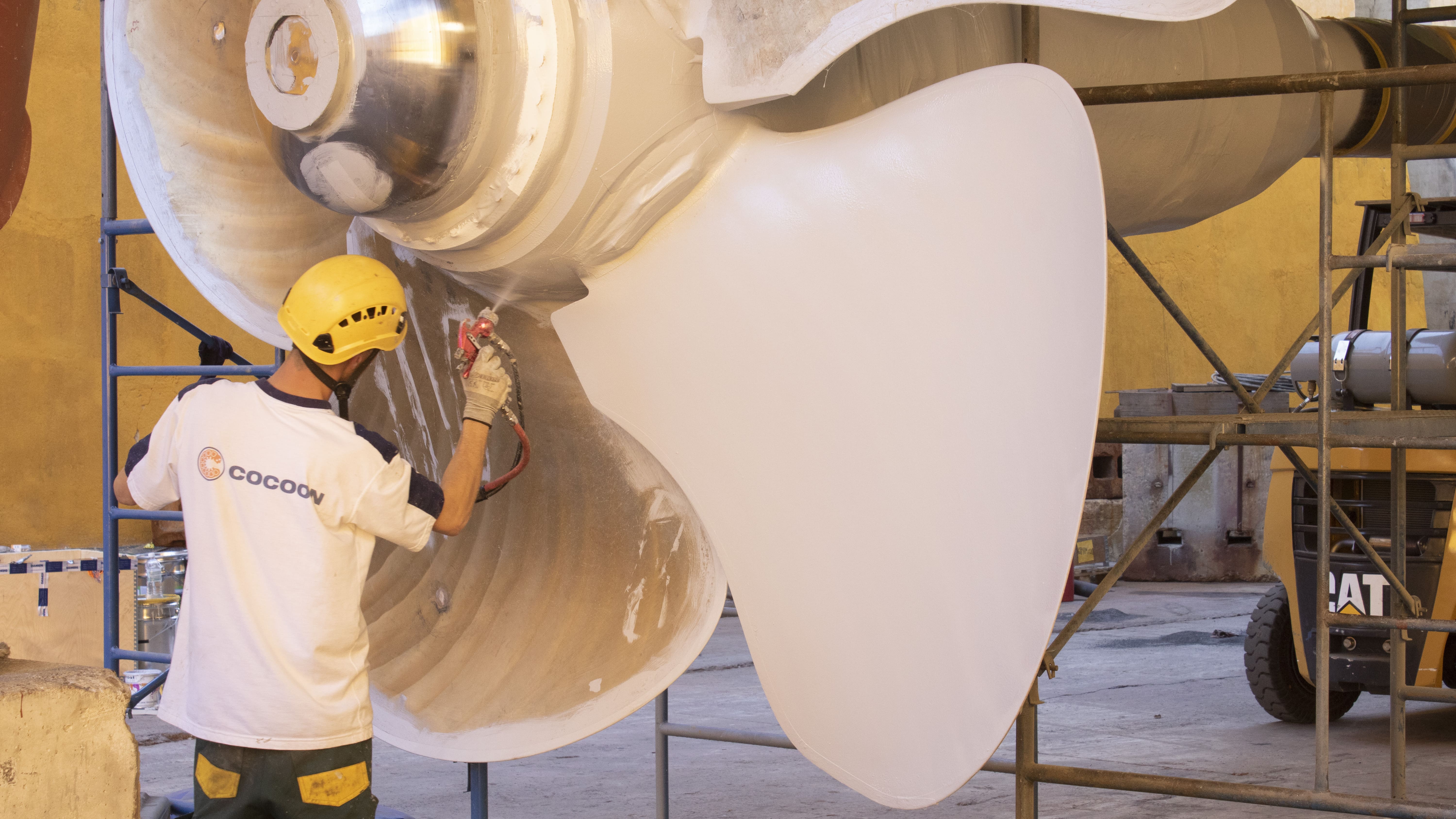Accretion on the propeller shafts and blades. It is a widely known problem for ships waiting to sail their first trial run. An unnecessary amount of time and money is needed to restore the screws. About eight years ago, Cocoon devised a solution for this in collaboration with Damen. It was a peelable variant of Cocoon. We will gladly tell you more about it.
On Monday, November 12 we traveled to Mexico, to start working for Damen again. At the moment a patrol ship is being built by the Mexican navy. This ship, the Pola, stands in the dry dock until it is technically ready, and then is put to water. There is one problem, however, that always comes into play when the ship starts its trial run: A buildup of accretion in the propeller shafts and blades. That causes the navy ship to sail slower during the trial run.
Cleaning up this accretion is quite costly, not to mention time consuming. Eight years ago, Cocoon was first called in by Damen to find a solution for this. Cocoon has now worked on eight vessels, ranging from projects in Romania to Indonesia and now in Mexico.
Not an unimportant detail: for this project there was quite a bit of time pressure, since the president of Mexico was inaugurating the ship, it had to be ready for launch in time.
Peel able Cocoon, the solution against accretion
To prevent accretion on the propeller shafts, blades and brackets, we use a peel able version of Cocoon. When the axles, blades and brackets are completely adjusted, and the ship is ready to be taken out of the dry dock, we can go to work. We spray our peel able Cocoon onto the propeller shafts and blades. In addition, we also close the brackets. We do this with multiple layers, so that the desired thickness is achieved. The accretion therefore occurs on the Cocoon, instead of on the ship.
Then the ship is launched and awaits the moment of the trial run. Until then, the peel able Cocoon prevents any chance of accretion forming on the propellers, and that saves a lot of time and money. Will the ship sail? Then a diver can easily remove the peel able PVC with scissors.
Besides seamless and airtight, now also: waterproof
We have already proven and shown many times that Cocoon is an effective method for preserving large parts in a open space. But in this case we apply Cocoon underwater at a depth of 5 to 6 meters. Sometimes it can take 1 to 2 years for the ship to make its first voyage, which means that the Cocoon must protect the propeller shafts against accretion at all times. And that has been proven: Cocoon is besides seamless and airtight, also waterproof.





